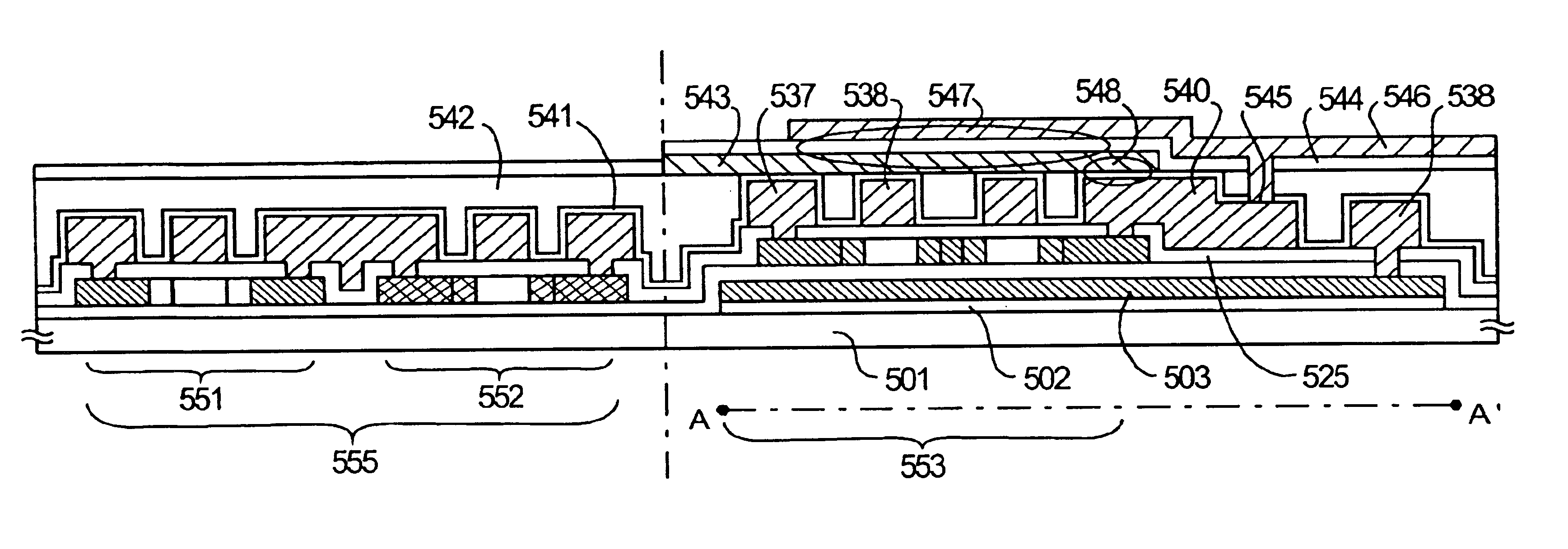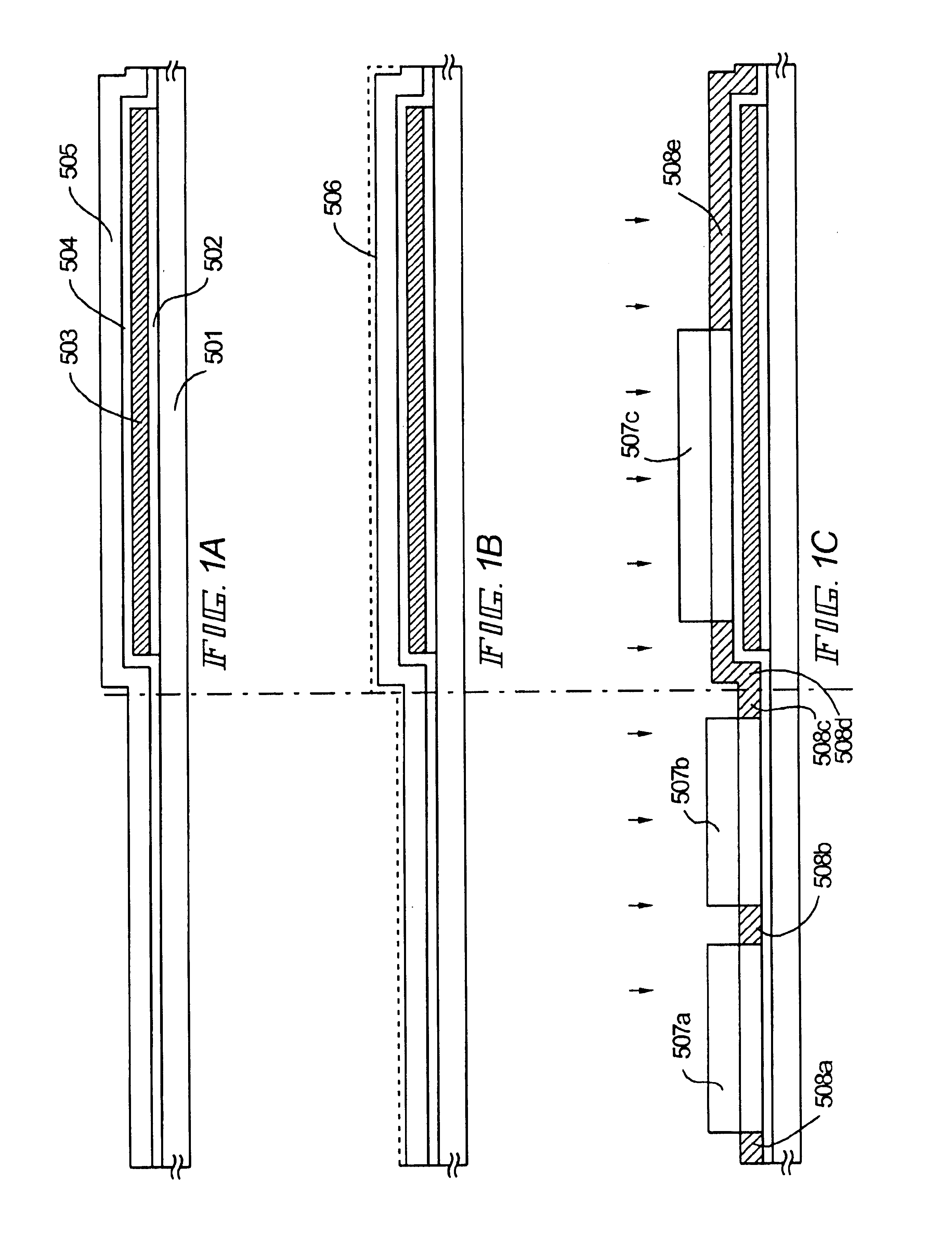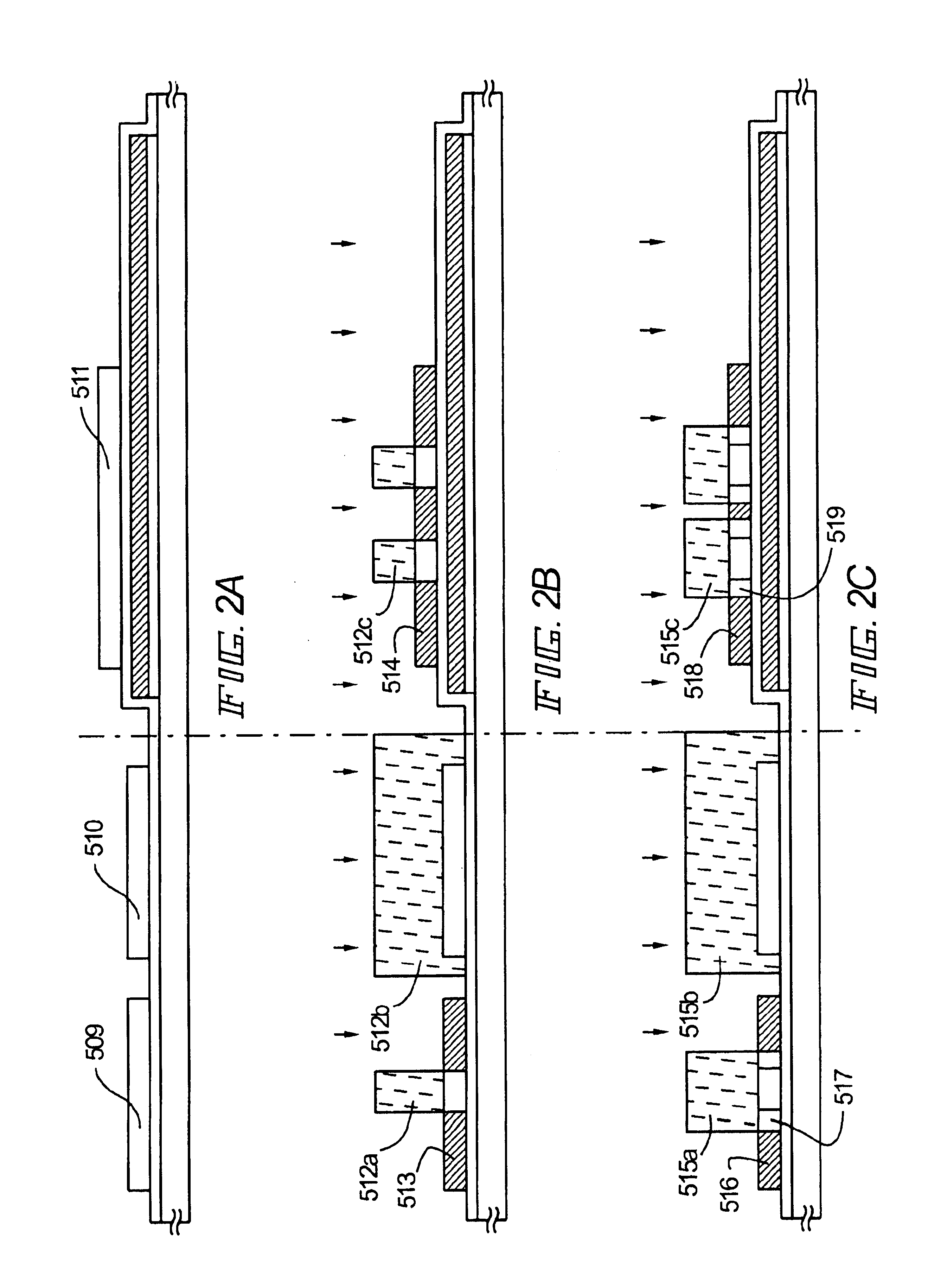Semiconductor device and method for manufacturing the same
a semiconductor and semiconductor technology, applied in non-linear optics, instruments, optics, etc., can solve the problems of reducing the contrast of image display, the difficulty of simultaneously satisfying the improvement of opening ratio and the increase of pixels, and the number of contacts, so as to reduce the number of levels, improve the opening ratio, and reduce the number of contacts
- Summary
- Abstract
- Description
- Claims
- Application Information
AI Technical Summary
Benefits of technology
Problems solved by technology
Method used
Image
Examples
embodiments
Embodiment 1
This embodiment explains a method for fabricating an active-matrix substrate, with using FIGS. 1A to 8. In the description, the substrate having a CMOS circuit, a drive circuit, and a pixel region having pixel TFTs and holding capacitances, formed on the same substrate is referred to as an active-matrix substrate for convenience.
First, this embodiment uses a substrate 501 formed of barium borosilicate glass or aluminum borosilicate glass, represented by Coning 7059 glass or 1737 glass. The substrate 501 may use a quartz substrate, a single-crystal silicon substrate or a metal or stainless-steel substrate, having an insulating film formed on a surface. Otherwise, may be used a plastic substrate having a heat resistance to a process temperature in this embodiment. This embodiment uses a quartz glass substrate.
Next, a lower light-shielding film is formed over the quartz substrate 501. First, formed is an underlying film of insulating film, such as a silicon oxide film, a si...
embodiment 2
This embodiment explains a method to fabricate a holding capacitance in a pixel region in a manner different from that of Embodiment 1. Note that the process is the same as the formation of up to the second interlayer insulating film shown in FIG. 4B on Embodiment 1, and hence omittedly explained.
An upper light-shielding film is formed on the second interlayer insulating film. This embodiment uses, in an upper light-shielding film, layers of a film 643a based on titanium and a film 643b based on aluminum. By carrying out anodic oxidation or plasma oxidation on a surface of the upper light-shielding film, anodization is made in a part of the aluminum-based film 643b and titanium-based film 643a to form an aluminum oxide film (alumina film) as an oxide insulating film 644b. The oxide insulating film 644b is used as a dielectric of a holding capacitance. Incidentally, the oxide insulating film obtained by anodizing tantalum (Ta) or titanium (Ti) has a high dielectric constant and hence...
embodiment 3
This embodiment explains a method for manufacturing an active-matrix substrate having TFTs of a GOLD structure formed by the use of the invention. Note that the process is the same as that of Embodiment 1 up to the formation of the conductive film shown in FIG. 3C and hence omittedly explained.
Herein, a photolithography process is used to form a resist mask (not shown) and carry out etching for forming electrodes and interconnections. At this time, the etching process is made such that the low-concentration impurity region in part is overlapped with the gate electrode. In this manner, an interconnection 634 is formed connecting the gate electrode 633, 635, 638, the source interconnection 632. 637, the drain interconnection 636, 640, the n-channel TFT and the p-channel TFT. (FIG. 11A)
Then, by forming up to a pixel electrode 546 according to Embodiment 1, an active-matrix substrate is completed. (FIG. 11B)
In the active-matrix substrate thus formed, because the gate electrode, the sour...
PUM
| Property | Measurement | Unit |
|---|---|---|
| thickness | aaaaa | aaaaa |
| thickness | aaaaa | aaaaa |
| thickness | aaaaa | aaaaa |
Abstract
Description
Claims
Application Information
 Login to View More
Login to View More - R&D
- Intellectual Property
- Life Sciences
- Materials
- Tech Scout
- Unparalleled Data Quality
- Higher Quality Content
- 60% Fewer Hallucinations
Browse by: Latest US Patents, China's latest patents, Technical Efficacy Thesaurus, Application Domain, Technology Topic, Popular Technical Reports.
© 2025 PatSnap. All rights reserved.Legal|Privacy policy|Modern Slavery Act Transparency Statement|Sitemap|About US| Contact US: help@patsnap.com



